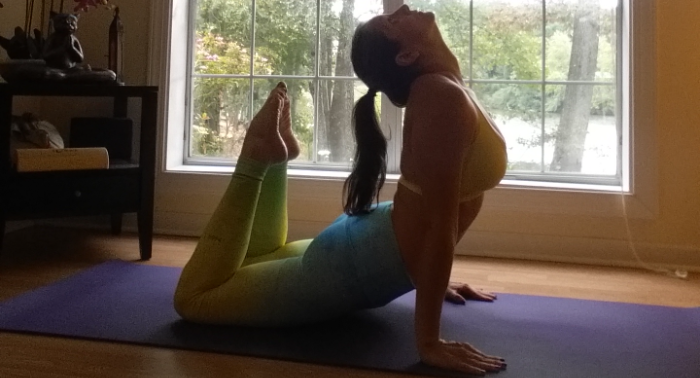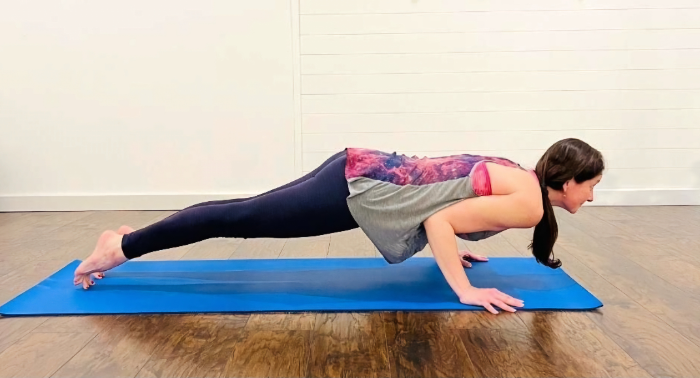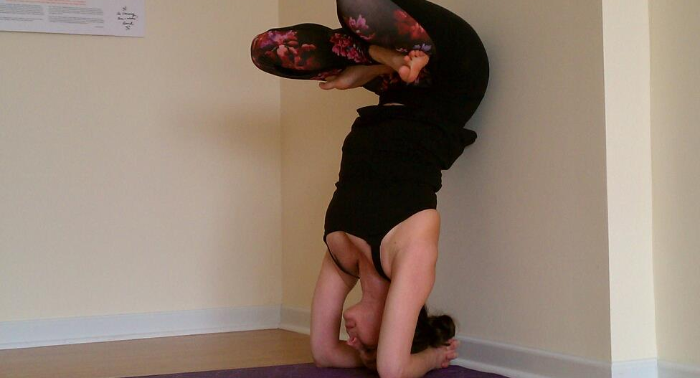Healing Through Ashtanga: The Same Movement But A Constant Change

In a world that constantly shifts, where personal, professional, and emotional landscapes are in flux, change becomes the one constant we can rely on. We all seek healing from the aches, stresses, and imbalances of life, but sometimes the path to healing seems unclear. It’s easy to feel stuck when we are in a cycle of routine, facing the same challenges day after day. However, one yoga practice invites us to embrace change—not as something to fear or resist—but as a force that can transform and heal us.
That practice is Ashtanga yoga, a dynamic system of movement that encourages not only physical change but deep, transformative healing on every level of being.
Ashtanga yoga is unique in the way it integrates breath, movement, and intention to create a powerful flow of energy that revitalizes the body, mind, and spirit. This structured yet fluid practice operates on the fundamental truth that change happens through movement—movement within the body, the breath, and the mind. And through this movement, healing unfolds.
The Healing Power of Consistent Movement
At its core, Ashtanga yoga is a practice of repetition and consistency. The series of postures are designed to be practiced in a specific order, which not only strengthens and aligns the body but also encourages a deep internal shift. Unlike other forms of yoga, Ashtanga has a simple structure, and practitioners commit to following the sequence every time they step onto the mat. The physical movements themselves aren’t just exercises; they are tools for healing.
Each asana (pose) is more than a physical stretch or strength builder. It’s an opportunity for the body to release tension, dissolve stagnation, and unlock areas of stored emotion or trauma. In Ashtanga, movement becomes the medium through which healing occurs. As you flow through the postures, muscles stretch and lengthen, bones align, and the energy in the body flows freely.
The practice of Ashtanga yoga activates the nervous system, increases circulation, and improves the range of motion, all of which promote physical healing. What’s more, as the body shifts and changes, it provides a mirror for emotional and mental change. Healing, in this sense, isn’t just about getting “better”—it’s about becoming more attuned to what is happening in the present moment, and in that awareness, finding the space for transformation.
Breath as the Guide to Healing
What sets Ashtanga apart from other yoga styles is its synchronization of breath with movement, a practice known as "vinyasa." Each movement is linked with an inhale or an exhale, creating a rhythmic flow that helps deepen the practice. This connection between breath and movement creates a dynamic experience that goes beyond the body’s physical limitations.
Breath, in Ashtanga yoga, is not simply a passive act; it’s an active, transformative force that carries the practitioner through each posture and guides them through the healing process. When we focus on the breath, it becomes a source of stability and awareness. It soothes the nervous system, helps release stress, and even detoxifies the body by expelling stale air and toxins.
Breathing deeply and mindfully during the practice creates a sense of presence and allows practitioners to tap into the body’s natural healing mechanisms. The breath fuels each movement, and with every inhalation, you create space for new energy, while with each exhalation, you release what no longer serves you. This cycle of inhale-exhale not only calms the mind but supports the body in its process of detoxification and rejuvenation.
Healing Through Ritual and Discipline
There’s something inherently healing about the ritualistic nature of Ashtanga yoga. It’s a practice that calls for commitment and discipline, which can have profound emotional benefits. When we approach our practice with consistency, we establish a sense of order and structure in our lives. This discipline can offer a respite from the chaos of the world around us. In the consistency of the practice, we create a space of trust and safety, which is essential for healing.
Ashtanga's structured approach provides a blueprint for transformation. With each practice, you meet yourself where you are—accepting the body’s limitations, honoring its strengths, and releasing what doesn’t serve you. This process can be a deep form of self-healing, as it allows you to practice patience and compassion toward yourself. It’s a space where change isn’t forced, but gently invited.
Over time, this sense of discipline and ritual can transcend the mat. The internal changes you experience through Ashtanga yoga can reflect in your daily life, shifting the way you approach challenges, relationships, and your overall sense of well-being. When we show up for ourselves, time and time again, we learn that healing is a process, not an event. We learn to flow with life’s inevitable changes and to trust that with movement, change is always possible.
Emotional and Mental Healing
While the physical benefits of Ashtanga yoga are widely acknowledged, the emotional and mental healing it fosters often goes unnoticed. The deep, rhythmic movement through the asanas, combined with focused breathing, creates a powerful energetic shift within the body that can help release stored emotions. These stored emotions—stress, anxiety, sadness—can often manifest as physical pain or tension, and through Ashtanga, we can begin to process and release them.
As you repeat the series of postures over and over, you begin to unravel old emotional patterns. Whether you know it or not, each movement you make is not just about the physical body; it’s a reflection of your mental and emotional landscape. In Ashtanga, there’s no rushing through the sequence. Each pose has its time, and with patience, you allow emotional healing to unfold naturally.
Mentally, Ashtanga yoga cultivates clarity and focus. The discipline required to follow the sequence, the control of the breath, and the dedication to your practice all help calm the mind. This mental clarity can translate into greater emotional resilience, improved decision-making, and a stronger connection to your inner self.
Change is Healing
Ultimately, the beauty of Ashtanga yoga lies in its capacity to remind us that change is healing. Whether it’s the slow, steady transformation of the body through movement or the gradual softening of the mind’s defenses, Ashtanga is a practice that teaches us that nothing stays stagnant. Change is inevitable, but when we embrace it with the tools of movement, breath, and discipline, we allow ourselves to heal.
The practice of Ashtanga yoga shows us that true healing comes through movement—movement of the body, the breath, and the mind. As we shift on the mat, we begin to shift in life. Through each breath and every posture, we move closer to the wholeness that we all seek. And in that movement, healing is not just a possibility—it is a certainty.
So, if you’re looking for a practice that transforms, that heals, and that guides you through the inevitable changes of life, step onto your mat. Ashtanga yoga offers not just a sequence of movements, but a path toward profound healing, both inside and out. Through movement, change will come—and with it, healing.




